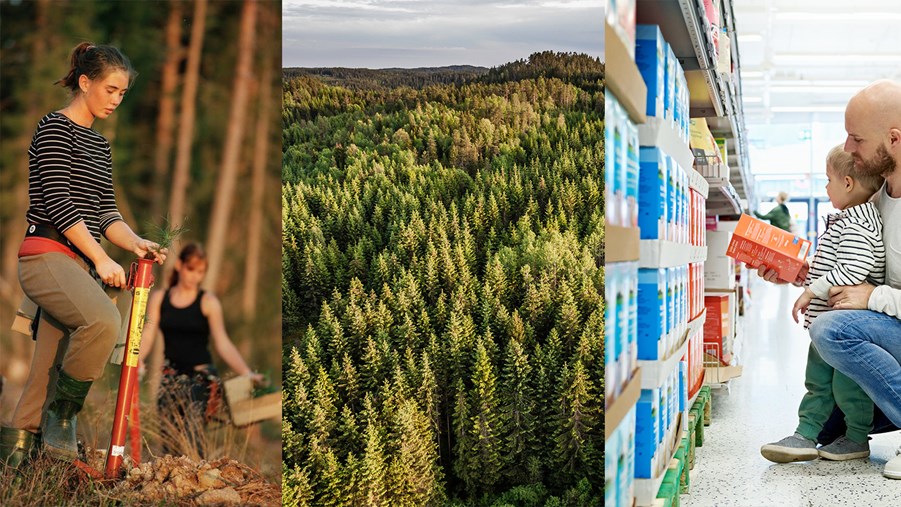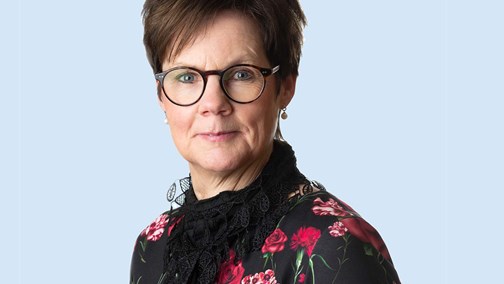
Anna Holmberg and Mårten Larsson from the Swedish Forest Industries explain how a post-2020 EU Forest Strategy can help the European economy recover post-Corona and why it must contain economic, social and environmental pillars. Forests can be managed as an infinite resource, they say (and supermarket shelves will soon be full of toilet paper again).
Q: Why talk about forests now, in the middle of the Corona crisis and with a post-2020 EU Forest Strategy only due late this year at the earliest?
Anna Holmberg: Work on the strategy has already started, both in the European Commission and in the European Parliament. Finnish MEP Petri Sarvamaa is Rapporteur for an own-initiative report that he presented just before the Corona crisis. The deadline for amendments to that is still 7 April.
Mårten Larsson: The Corona crisis will affect everything, even forest policy. For one, it is slowing everything down, which means time for a more thorough analysis of all aspects of the Green Deal, including a post-2020 Forest Strategy. Second, the jobs and rural development potential of forest-based value chains becomes even more important than before. It is essential to realise that using products from the forest-based sector creates more jobs than purely preserving forests as carbon sinks.
Anna: The crisis has also made the society more aware that we make critical products. Think of tissues, masks and toilet paper. 'Why have we run out of toilet paper?' is the question on everyone's lips. People didn't realise we have more than enough production capacity. The shelves are empty because of "just-in-time" logistics. When demand suddenly jumps by 800%, no supply chain in the world can respond right away.
Q: The EU already has a Forest Strategy. How will the post-2020 strategy be different? What impact will it have?
Anna: The existing strategy is from 2013. There is nothing wrong with it, but the world has moved on. At the time we didn't have a land use, land-use change and forestry (LULUCF) regulation, sustainability criteria for solid biomass, sustainable finance architecture, a circular economy action plan or even the UN Sustainable Development Goals (SDGs).
In addition, many more EU policies directly or indirectly affect forests and their products than in the past. It's much more important to have an umbrella framework for the sector.
Mårten: We need a strong strategy so that different parts of the EU don't come up with different interpretations of what sustainable forest management is, for example. It is also an opportunity to recognise that the EU can promote sustainable forestry in areas where it has strong competence such as the Common Agricultural Policy (CAP). A good example is the "1 hectare initiative" announced by the former EU agriculture Commissioner Phil Hogan last year, which promotes afforestation on marginal agricultural land.
Q: What is the EU's role in forest management, which is a member state rather than EU competence? What are your top priorities for the post-2020 Forest Strategy?
Anna: First, it has to be a standalone policy. It should not be subordinate to other policies, for example a new 2030 biodiversity strategy. Second, it should encompass the full forest-based value chain, from forests to end-consumers. And third, it needs to recognise the three pillars of sustainable forest management: economic (timber production), social (e.g. recreation) and environmental (e.g. biodiversity protection).
Mårten: We want a market-driven sector where forest owners can make a living and make it possible for them to invest not only in growing trees but in growing a forest's social and environmental value.
Anna: Forest management is a member state competence, but forests are also part of environment, energy and climate policy, which are led by the EU. We recognise that the EU is not trying to define how to manage a forest, but how forests can contribute to these wider goals. The post-2020 EU Forest Strategy can contribute to clarifying the balance between EU and member states competences.
Mårten: This is not only an issue for Sweden, Finland or Austria. You have substantial forest holdings in most Member States. In practice, sustainable forest management will differ in different countries depending on tree species, climate, soil conditions and so forth. The central principle we adhere to however, is that forests should be managed in such a way that future generations have at least the same benefits from them as we have today.
Q: Are forests an infinite resource? We often hear that the availability of land for example ultimately limits bio-resources such as trees.
Mårten: Land is finite, but forests can be managed as an infinite resource - if they are managed well, not if they are managed badly. If you do not manage them at all morever, you increase the risk of calamities such as insect infections and damage from storms or fires.
Anna: Forests are an asset like any other. Owners work their assets to make them pay dividends. Today those dividends are not only measured in terms of timber, but also in terms of social and environmental value.
Facts and figures:
- Between 1990 and 2015, European forest volume grew by 40%. (FAO data)
- EU forest-based industries employ around 3 million people. In some Swedish regions, the forest industry accounts for 20% or more of industrial employment, making it a cornerstone for rural development.
- The Swedish forest industry is nearly entirely fossil-fuel free and the largest Swedish producer of renewable electricity outside of the power sector.
- The forest industry can contribute to the EU climate goals in three ways: 1) by sequestration of CO2 in growing trees, 2) by storage of carbon in harvested wood products, and 3) by substitution, when bio-based products and bioenergy replace fossil fuels.


